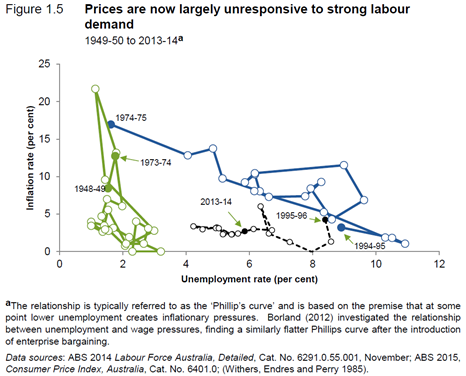Why we should welcome the workplace relations review
The left will accuse the Abbott government of trying to revive WorkChoices but an in-depth review of Australia's industrial relations is also an opportunity to fix the flaws in the existing Fair Work Act legislation and boost labour force productivity.
The Productivity Commission released an issues paper overnight that establishes the key issues and terms of reference for its final report, which is set to be released in November. It appears set to be a comprehensive review, with nothing off limits.
At this stage it is important to remember that the PC's issues paper is just that, an issues paper, and doesn't necessarily reflect any firm viewpoints on the existing workplace relations framework or the need for reform. These issues will be teased out in the next six months before the PC release its draft report in June or July.
It is easy to characterise workplace relations as a 'left versus right' issue. Workplace relations has historically been one of the few areas in which the two major political parties offer a clear point of difference. It's only natural that it has come to be seen as a rallying point for both sides.
Is the Abbott government likely to propose anything as controversial as WorkChoices? I wouldn't bet on it. This isn't the John Howard government; the Abbott government doesn't enjoy a majority in both houses, nor does it currently enjoy the support of the public.
Nevertheless, a regular review of industrial relations is necessary because the labour market is dynamic and ever-changing. According to the Department of Employment, the skill-mix of Australian employees will shift significantly by 2018. Estimates show that a majority of job growth over the next few years will be in professional rather than low-skill occupations.

Technological change has also influenced the existing labour force and has implications for industrial relations. According to the PC, examples include: “the international outsourcing of call centres; the online provision of music, books, financial services and airline and accommodation booking systems; and new models of domestic service delivery.” These are developments that have increased the sensitivity of businesses to regulatory burden, as well as the competitive pressures faced by Australian businesses.
Demographic change may also pose a challenge for Australia's existing workplace relations framework – with particular implications for older workers. Meanwhile, the youth unemployment rate has soared and it is only prudent that we determine whether the existing framework has failed them (in addition to a variety of other issues).

Some existing reports provide an insight into the concerns that some businesses have with the existing legislation. Concerns include a lack of flexibility: in reference to the automotive industry, the Australian Industry Group said the existing system “made it difficult for businesses to hire contractors and use labour hire businesses”.
The system also doesn't encourage productivity – which in my view is a key weakness of any employment deal. According to the PC, “survey evidence from resource businesses suggest that most enterprise agreements do not have clauses relating pay to productivity”.
Other businesses are concerned about the high penalty rates for work outside the five-day working cycle and the costly and slow unfair-dismissal laws, which have encouraged some employers to pay ‘go away' money to avoid the formal process.
There are also concerns about the minimum wage and whether it prices some workers out of the market. Should there be a regional minimum wage? This could be a particular problem for younger workers.

But when it comes to workplace relations, a perceived weakness from the business sector may very well be a strength from the point of view of the employee, and vice versa. Getting the right mix can be difficult and requires a cost-benefit analysis of each piece of regulation.
Union groups, for example, believe that the current framework lacks a safety net for workers not classified as employees, such as contractors, and that contracting can be used as a way to reduce wages and conditions. Other concerns include inadequate protections in relation to temporary overseas workers and general protections that are too narrow in scope.
An alternative view is that the system is working quite well and has stood up to recent challenges. The Philips Curve, for example, shows a labour market that is exceeding well-behaved, with wage booms concentrated solely within sectors encountering insufficient labour supply. The argument against this view is that employment growth since the global financial crisis has been lacklustre and not particularly response to lower interest rates.

The report into industrial relations will naturally ruffle some feathers but it's a review worth undertaking. The compulsion to scream ‘WorkChoices' is strong but also increasingly off-base. We cannot let our past mistakes derail future reforms and there appears to be a number of areas that can be tweaked to help make the Australian economy more productive but also resilient to economic shocks.
















